“It is terrifying to walk on Station Road in West Mambalam. There are shops and vehicles which dominate the space, and senior citizens like us are very vulnerable, especially due to encroachment,” says Ganga Gopalan, a septuagenarian who visits the area often.
Many residents of Chennai feel that the city is not pedestrian-friendly. Footpaths across the city have been taken over by various encroachments and obstructions that force pedestrians to walk on the streets and put themselves in danger.
The city’s poor track record in protecting pedestrians is evidenced by a study that found that more pedestrians died in accidents than in other mode shares in 2022. The lack of pedestrian-friendly infrastructure in Chennai is a key contributor to such accidents.
In order to make the city more pedestrian-friendly, the Greater Chennai Corporation (GCC) has been removing encroachments on footpaths. But we found that the removal of encroachments did not mean walkable footpaths for the city’s residents.
Read more: Walking in Koyambedu, OMR or Chennai Central? Be cautious, warns study
GCC’s encroachment removal drive
“This footpath encroachment removal drive has been happening since June 2022,” says an official of the GCC on the civic body’s efforts.
Every zone plans the encroachment removal drive a month in advance. Mondays, Wednesdays and Fridays are the days of the week when these drives will take place. Assistant Engineers, manual workers and machines like JCBs are roped in for the work.
They remove both encroachment and construction and debris waste that obstructs footpaths and other public spaces.
“We categorise encroachments on footpaths as permanent and temporary. Permanent encroachment includes concrete structures like ramps, unauthorised shops extending to the footpath, and staircases. Temporary encroachment includes advertisements, banners, pushcarts, vendors selling their wares, bunk shops, furniture and vehicles,” explains the official.
Every fortnight, the GCC commissioner reviews how many encroachments have been removed in every zone.
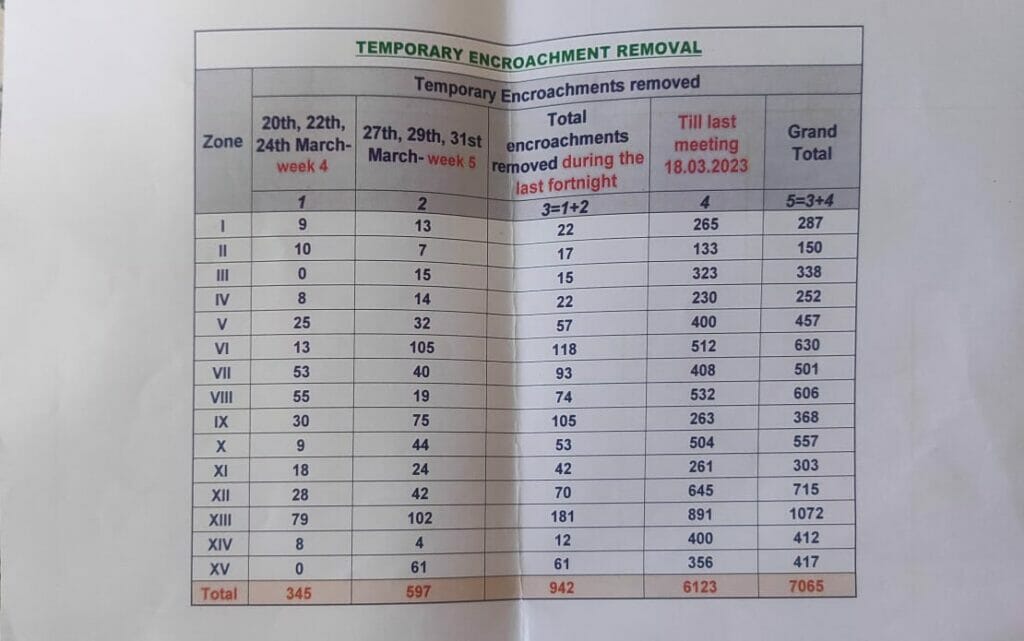

Encroachments return after removal
Spot checks in the area where encroachment removal drives of GCC have taken place present a complicated picture. Not all encroachments that are removed stay gone. Despite GCC removing temporary encroachments from footpaths, other forms of encroachments such as parked vehicles or furniture and flex boards have come to occupy the area.
The encroachment removal drive on Strahans Road has made little to no difference for pedestrians.
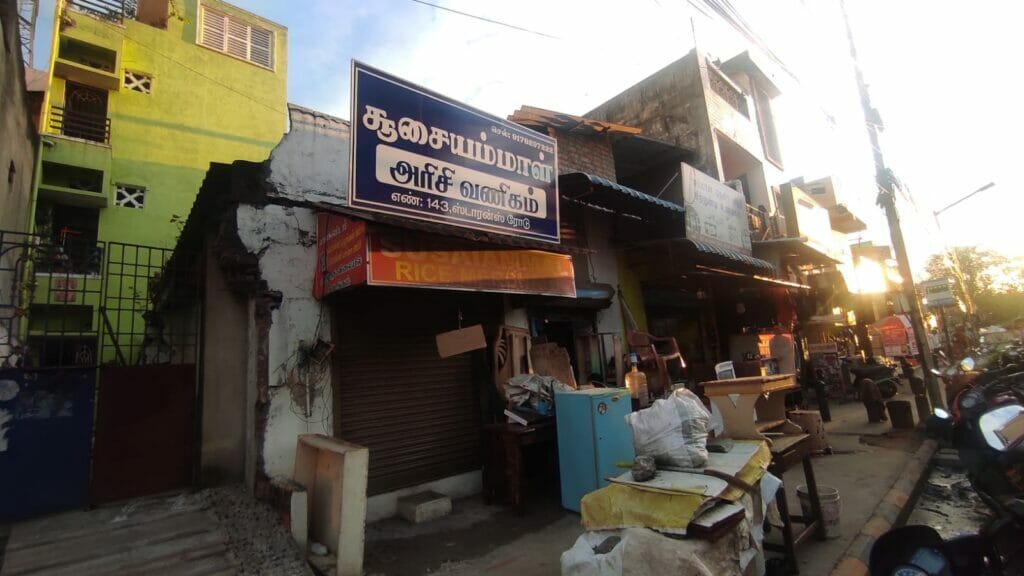
Footpath in Kolathur also witnessed a similar encroachment pattern after GCC’s initiative.
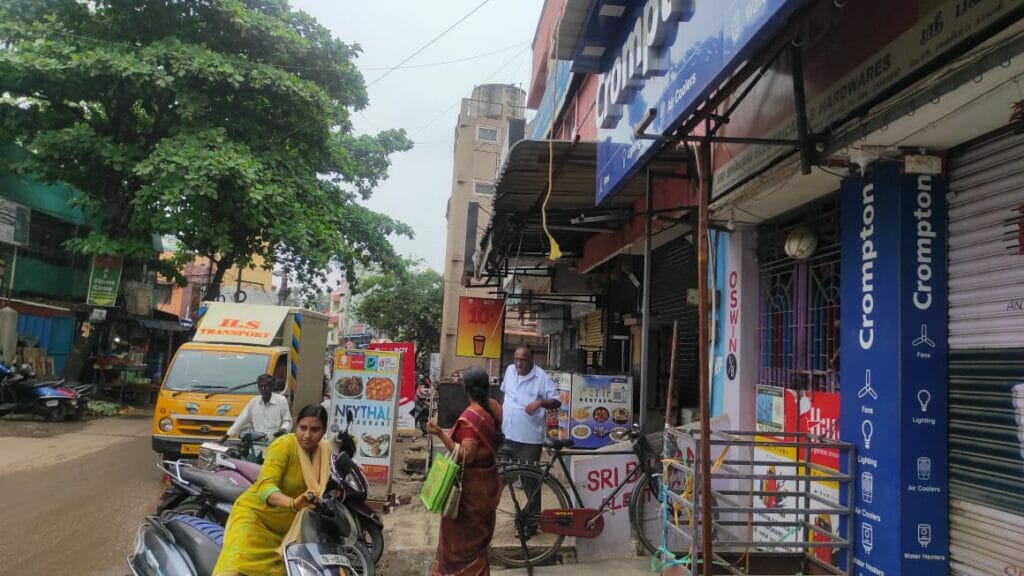
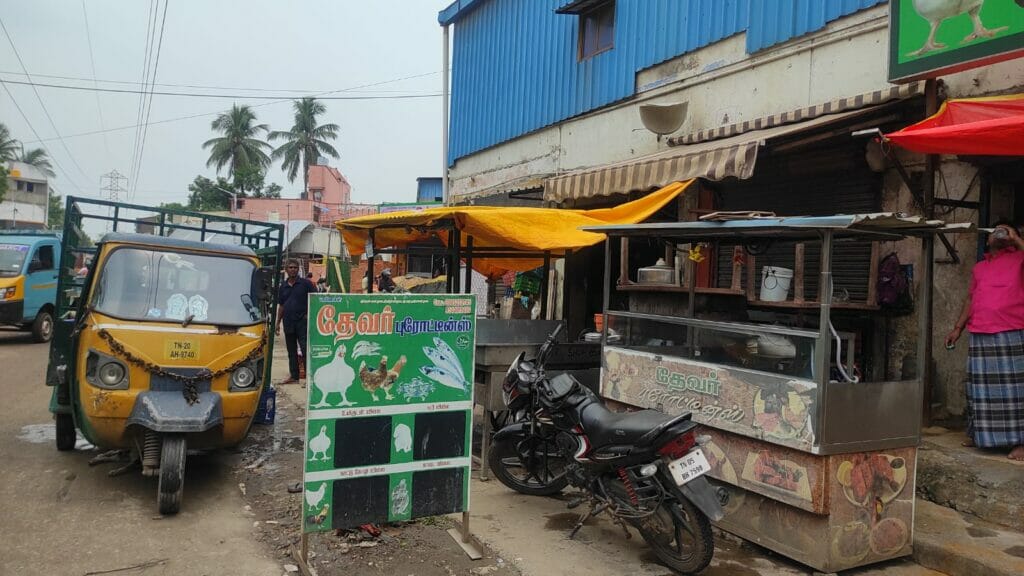
Permanent encroachment removal too does not necessarily make footpaths obstruction-free as seen in Besant Nagar.
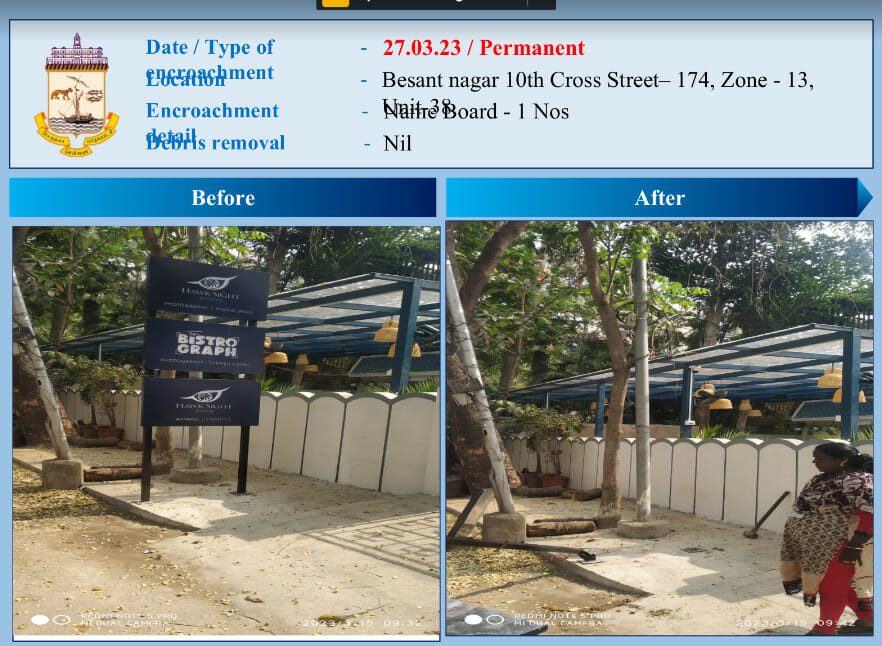
In North Mada Street, Thiruvanmiyur, GCC demolished a ramp from a shop. But the debris of the ramp remains. Moreover, there are flower vendors dotting the same area where the drive took place.
“We have been selling flowers near the Marundeeshwaran Temple in North Mada Street for generations. Every few months, whenever GCC officials come to clear encroachments, we have to clear our businesses and hide until they go,” says the flower vendor.
Larger shops extend towards footpaths even after GCC’s encroachment removal drive. The civic body has removed parts of the shop that extended towards the footpath in KK Nagar’s PV Rajamannar Salai. But in a matter of weeks, the obstructions on the footpath were back.
“When GCC officials come, we will declare a holiday for everyone. We are unable to cook inside the small space we already have. Moreover, it is not like there is no space for pedestrians to walk on the road,” says the owner of the shop where encroachments were removed.
Making encroachment removal drives work
Despite regular encroachment removal drives, there is very little headway being made by the civic body in creating pedestrian-friendly infrastructure.
The lack of a monitoring mechanism to ensure that the encroachments removed by the civic body do not return has made the exercise ad-hoc and reduced its effectiveness.
Encroachment removal drives must also be done in tandem with other solutions for footpath obstruction in Chennai.
Finding a solution for street vendors who sell on footpaths is one key step of the puzzle.
“The officials asked us to go towards the edge of the road leaving some space for pedestrians to walk. I don’t know how much more outwards we should go,” says Buela, the fruit vendor shown in the picture. “If they remove us off the roads, I don’t think we can survive. My family and I have lived here for generations and done business here. Uprooting us would be extremely unfair.”
Many vendors on the street claimed that they were not removed, but were asked to move away from the space meant for pedestrians. “It is not like we do not want people to not walk on the roads. We just want to do our business in markets where we can sustain our lives. Is that unfair to ask?” Murugan, a banana vendor asked.
The vendors request the creation of more exclusive vending zones to run their businesses since they claim that they do not intend to eat up the footpaths and will relocate to a suitable location.
Another way to ensure footpaths remain free for pedestrians is to streamline on-street parking. Parked vehicles are one of the main sources of obstruction of footpaths in the city.
“Walking is difficult if the footpaths are encroached. But people need vendors to buy stuff. The first thing we want the government to do is to remove the vehicles parked on the roads more than clearing vendors off the footpaths,” says a pedestrian we met on Tana Street.
Walkable footpaths can be created only by regulating on-street parking and building wider pavements.
With news that GCC has planned to create walkable and broad footpaths in different areas in Chennai, from Kasimedu to Thiruvottiyur Beach, Adyar to Besant Nagar and Kasturba Nagar to Thoraipakkam, among other stretches, such steps become more crucial.
These initiatives must take place with consultation with all the stakeholders- residents, vendors, owners of commercial spaces, urban planners and civic body officials.
Without a multi-pronged approach, encroachment removal drives will continue to remain a Sisyphean task for the GCC.
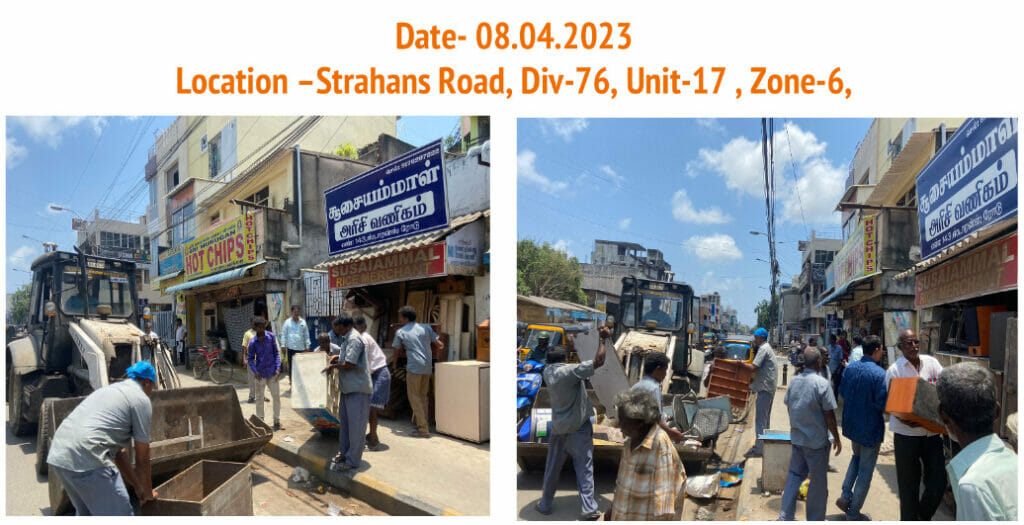
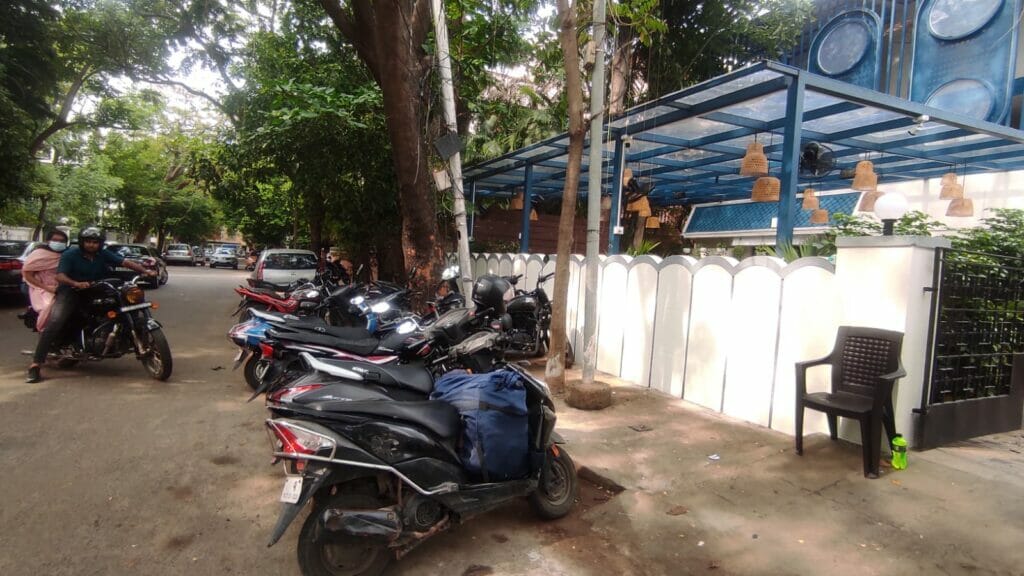
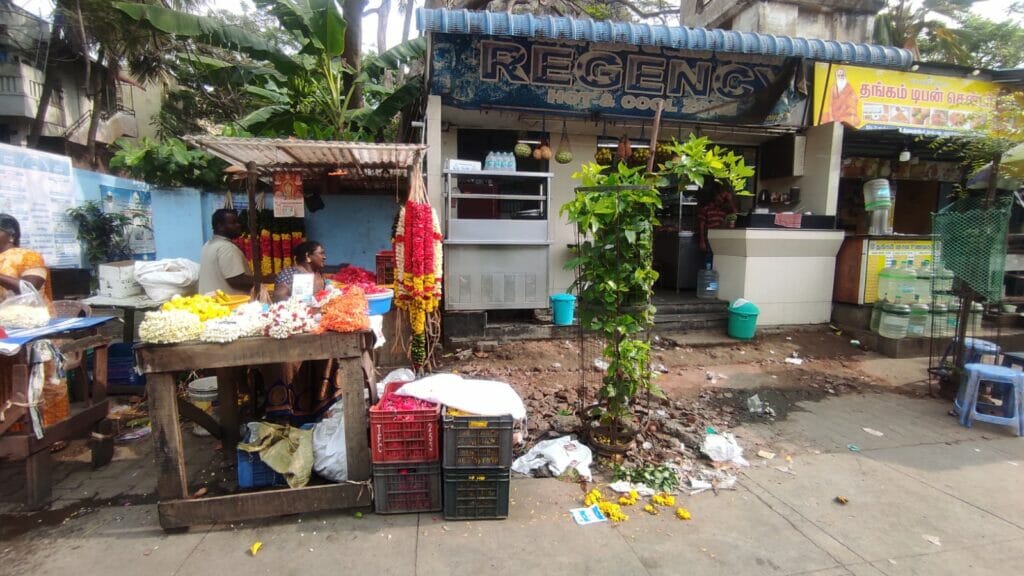
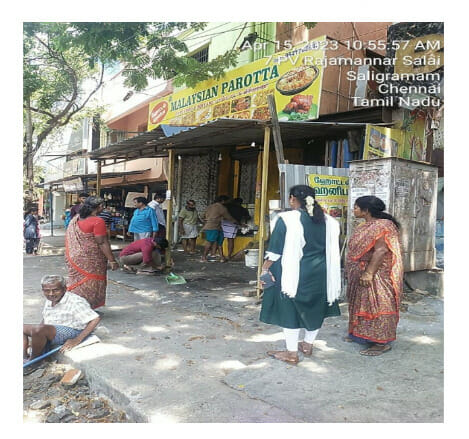
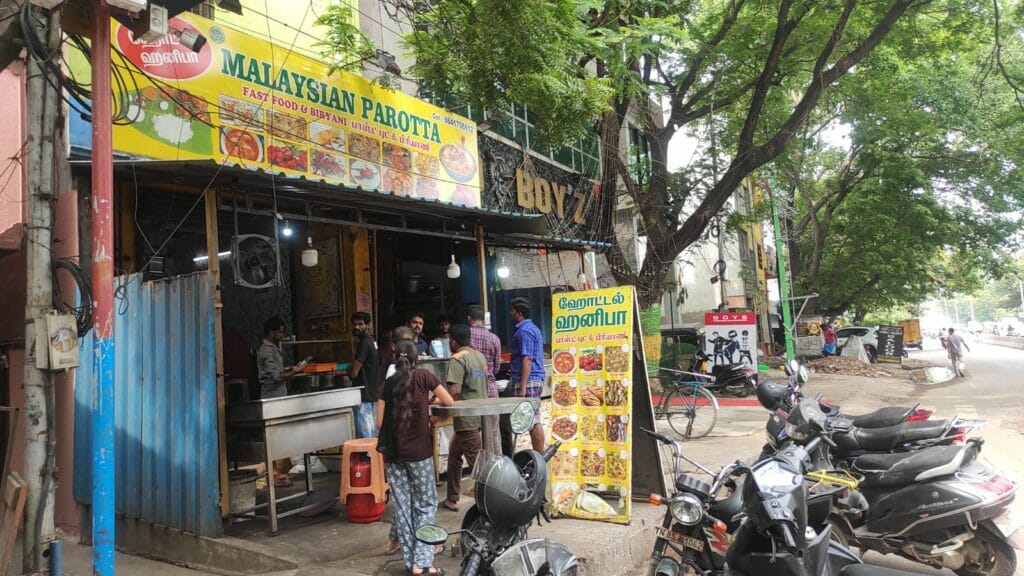
More than removing the encroachment, what the GCC should ensure is that such encroachment does not happen again. Since the GCC has not been successful in totally eradicating encroachment,what is the point in taking creating a data on removal of encroachment. We nick-named T Nagar as ENCORACHMENT NAGAR because of large scale usurping of public spaces. On Ranganathan Street, even those commercial establishments which have large enough space within itself have been allowed to grab the public space. As a result of this, the public exchequer has to bear the brunt as the authorities have to find an alternative and come up with the sky walk connecting Mambalam Railway Station and T Nagar Bus Stand.